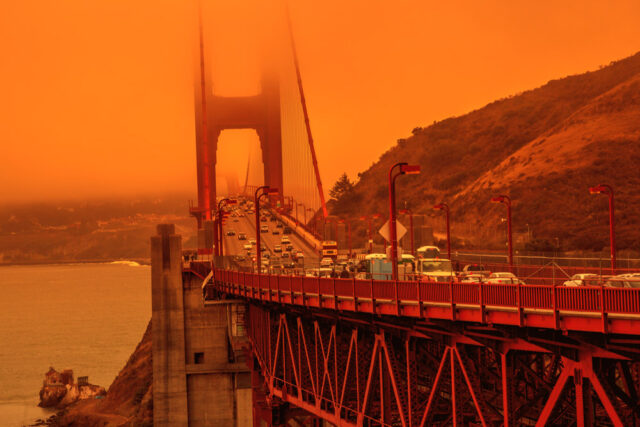In the wake of successive catastrophic fire seasons, US authorities are considering new strategies in fire management. Forest fires in the nation’s west are reaching higher, normally wetter elevations and are burning at unprecedented rates.
In western US, wildfires are becoming more severe, as they are in other countries, including Australia. According to a new study, “burned area, fire size, the number of large fires, and the length of fire season have increased in the western United States in recent decades”.
The study, ‘Warming enabled upslope advance in western US forest fires’ published in Proceedings of the National Academy of Sciences (PNAS), also found forest fires in the country’s west have reached new elevations in recent decades, “scorching territories previously too wet to burn”.
The researchers attribute the shift to climate warming. “We estimate that increased aridity between 1984 and 2017 exposed an additional 81,500 km2 of western US montane forests to fires,” they write. “These changes have significant implications for terrestrial carbon storage, snowpack, and water quantity and quality.”
Historically, higher elevations have been protected from fire by the abundant moisture present due to cooler temperatures, the presence of snow, and fuel and soil remaining moist until late in summer.
However, fire activity is increasing in high-elevation areas in the US, including Sierra Nevada, Pacific Northwest, and Northern Rockies.
Several factors associated with climate change contribute to the increase in forest fires at higher elevations, such as warmer temperatures, longer snow-free periods, increased evaporation, a decline in rainfall during the fire season, and increased storm activity and more frequent lightning strikes.
In an analysis of all large fires from 1984 to 2017 in mountainous ecoregions of the western US, researchers revealed high-elevation fires advanced upslope by 252 metres. It’s a trend they believe will continue. “Climate warming is expected to continue increasing forest fire activity while fuel remains available.”
Fires in previously unburned areas pose a specific risk to water supply and management. “High-elevation mountains are water towers of the world, providing fresh water to millions of people,” say researchers. By changing the mountainside vegetation cover and soil characteristics, fires upset the natural balance of watersheds and the ecosystems that live within them.
New strategies in fire management
For much of the 20th century, US fire management conformed to the ‘10am policy’, which required that forest fires be extinguished by 10am the morning after their detection. The origin of this fire-suppression policy was 1910’s Big Burn, a catastrophic conflagration that scorched three million acres of land.
Two experts argue that the 10am policy neglected other methods of fire management. “The dismissal of Indigenous ecological knowledge about fire and land stewardship undoubtedly contributed to the rise of suppressing all fires,” William Deverell and Elizabeth A. Logan write in The Conversation. “Now, more than a century later, the 21st century’s big burns are a signal that things have gone terribly wrong.”
In the US, the effects of climate change have seen the rise of the ‘gigafire’, a blaze that burns more than one million acres. Fire suppression – where 98 per cent of fires are put out before they reach half a square mile in size – means that fuel builds up, creating firestorms that follow previously unseen patterns of behaviour.
Fighting 21st-century gigafires requires a paradigm shift in fire management, argue Deverell and Logan. Currently underutilised tools include prescribed and cultural burning, which mitigate catastrophic fire and aid forest health.
“Indigenous communities have long lived with fire and used it to cultivate healthy ecosystems,” they write. “Building a more successful coexistence with fire includes figuring out how to work cooperatively. This includes broader conversations about environmental knowledge, what constitutes it, and how best it can be shared.”














